|
I visited the three day West of England Quilt Show yesterday in the exhibition hall at the University of West of England in north Bristol. I wanted to share with everyone the work of Chrisse Seager who kindly looks after our website. She had a number of quilts on display, some cushions and a beautiful quilted jacket. Our congratulations for coming "runner up" for the Best in Show by a Professional - see centre image below. By Ros
1 Comment
Helen Colling was introduced to needlework at an early age and was encouraged by her City & Guilds tutor to apply for a 3 year Stitched Textile Diploma with Jan Beaney & Jean Littlejohn. During the drawing module she explored transparency – looking through glass doors, reflections, shadows and layers. The topic for her final piece was the atmosphere after something has gone. Helen has developed her work since her qualification using poetry and the transparency layering technique. She explained how she uses Reynolds freezer paper to print photos onto cloth and hand stitches outlines. We were interested to see her final work sandwiched between two layers of Perspex which emphasises the transparency theme.
Helen takes part in Open Studios and exhibits with Okra textiles. Report by Ros Mandy Nash started her workshop by explaining the fibres and fabrics that can be used with nuno felting and how different types of wools give different effects. Mandy then went on to demonstrate the first technique of nuno felting. She laid out wisps of wool all over a square of muslin in one direction and changed the direction for the second layer. Small pieces of fabric were added for decoration and then the sandwich was put between bubble wrap and a noodle was used for rolling. After rolling and turning numerous times, olive oil soap was added at the end before throwing on the table to form the felt. The second technique also used muslin but this time the wisps of wools did not cover all the muslin, they were laid down to form a chosen pattern. The rest of the process was similar to the first. Mandy was very generous with her tips and suggestions and we left the workshop with a lovely variety of individual samples. Above are examples of Mandy's work.
Thank you for a fun day, Mandy. Report by Ros 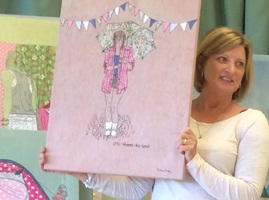 Caroline Kirton’s talk on Monday was entitled “Telling Tales” and after a while it became clear as to why she had chosen this title. As a mature student after the birth of her three daughters, Caroline enrolled on an Access to Art course which led to a Degree in Applied Arts. During the course she researched the feminist artist Mary Kelly and her work influenced Caroline. Using her family and their friends Caroline took a series of snapshots of teenagers which explored their emotions, their relationships, their thoughts and behind each picture there is a message and an appropriate title. It all started when her daughter’s boyfriend was taken back to the States without saying “good bye” and you can see exerts from an email and see the despair in the posture of the young lad called "Lewis" below. Many teenagers experience traumas in family life and as a result teenagers get a bad press so Caroline wanted to highlight the positive. "But I need it!", "You are ruining my life", "She is copying me" , "I think this will be OK for 6th form", "Just Chilling" and "My Mum's a proper weirdo" are amongst the chosen titles. As parents ourselves, many of us could relate to the topics which had been chosen. From a practical point Caroline takes photos which she then draws out and enlarges. She uses bondaweb to position vintage fabrics to the background and screen prints of text often taken from emails. She amazed us all by saying that she does not use a frame or hoop when free machining and always stretches the finished work herself.
Thank you Caroline for sharing your techniques with us and for giving us a most enjoyable afternoon. Report by Ros 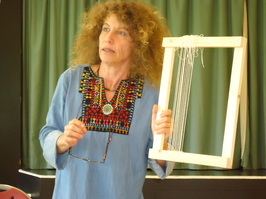 Following a wonderfully stimulating talk on the previous day, Isabelle Jourdan led a one day workshop entitled ‘Wild Woman Weaving’ to a group of would-be needle weavers. As it turned out the title was not a misnomer! Isabelle with her voluminous hair, bare feet, frantic hand gestures, dynamic personality and superabundant enthusiasm was truly ‘wild’ about her craft. Moreover by the end of the day our group of sedate and temperate stitchers had all become infected with her enthusiasm and were champing at the bit to invest some of their own personalities and creativity into their samples. The day started with Isabelle showing the group how to attach the warp threads to the frame. This was more time consuming than at first appeared as each pair of threads had to be attached individually. She then demonstrated the basic needle weaving technique using a single background colour. Once the group had mastered this she provided instructions for six variations of the basic weave, using just one other colour of thread, which amazingly, resulted in the creation of some beautiful and potentially intricate patterns. At the end of the day Isabelle explained how to remove the sample from the frame, and gave suggestions about adding decorative finishes such as fringes, tassels, beads and feathers. The completed sample could then be hung on a twig or small branch to give it a rustic feel. Although three members of the group were able to remove their samples from the frame, unfortunately there was insufficient time to complete the hangings. However, everyone had developed sufficient skills and knowledge to be able to complete these at home. More importantly, everyone had been inspired by Isabelle to unleash some of their latent creativity through the absorbing medium of needle weaving. A great day was had by all!
Report and photos by Maria F Thanks, Maria! Ros L 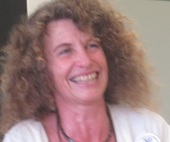 After our summer break we welcomed Isabelle Jourdan to speak about her great interest in spinning and weaving. It started when she and her husband were running an olive farm on the Greek island of Lesbos and she visited a shop exhibiting local weaving. Each Saturday for the next six months Isabelle attended a workshop and became totally enthralled with the craft. A lot of her inspiration has come from Kirsten Glasbrook who has written several books on tapestry weaving. Isabelle does not believe in conventional weaving methods but follows the simple approach using a basic wooden frame and not a loom - an old picture frame, an old window or door frames for large pieces. An embroidery needles to weave rather than a shuttle and she uses a knitting needle to knock the weft rather than the recognised tools. Isabelle used the expression "wild weaving" and in some of her work she does not start at the usual place, her weft threads do not necessarily go the width of the work and are often curved. Finishing adds an interesting dimension and she hangs her work on driftwood and uses a variety of wrapped tassels, beads and even feathers. As a result of her introduction to weaving the next step was to create her own yarns and Isabelle passed round a basket of raw wools and finished yarns from a variety of animals - merino, alpaca, Jacob, Jacob cross and goat. She does not sell her work, she teaches her techniques to encourage people to use their own ideas, colours and wools to make hangings, cards, brooches and bookmarks. Tomorrow, Isabelle will be leading a workshop entitled "Frame tapestry weaving for beginners" so we look forward to hearing about it and to seeing members' samples. Report by Ros L Lisa opened her talk by speaking about her 15 year background as a textile designer for the fashion industry, as well as teaching Sixth Form and University students. After completing an MA in Textiles in 2011 Lisa began concentrating on her own work and exhibiting with the Prism group of Textile Artists. Prior to 2010 her work mainly comprised of etching and print making, but Lisa then moved onto fine art. She experimented with metal leaf, acrylics, paper and cloth. At this time Lisa’s work was influenced by the sculptures of Barbara Hepworth, with a theme of the vulnerability of children and the environment, using digital printing, collage and etching on embroidered cloth. Lisa’s commission of The Nature of Mending project was inspired by the work of Anna Freud in relation to the children of the Kindertransport during WWII. During her research for this project, Lisa encountered many moving stories of some of those children who came to the UK and settled here. Some of the archived documents have been digitally printed onto cloth as part of Lisa’s installation for The Nature of Mending, showing how children who were “broken” by losing their families eventually were “mended”. Lisa concluded by telling us about the piece of Textile Art purchased by the Embroiderer’s Guild depicting poppies, which was inspired by the work of Paul Nash, a surrealist painter who became a war artist in WWII. All in all, Lisa was a very interesting and inspiring speaker.
Thank you Ann K for this report. Ros 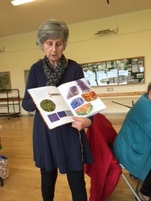 Janet's workshop was based on her new book and we were looking and interpreting the work of Vincent Van Gogh in hand stitching. In particular the way he used colour. Samples include with yellows and using cretan stitch, green on red fabric stitching blanket and button hole, blue on red fabric with sorbello stitch, but to name a few. Our last sample was using neutral colours on a neutral background with a hint of colour using the stitches we had covered on the course. Everybody's work was inspiring and very different from each other which helped us all explore the wonders of hand stitching which is a real triumph for Janet as I am a hardened Free Machiner! Great 2 day workshop Thank you Nikki for your report. Ros 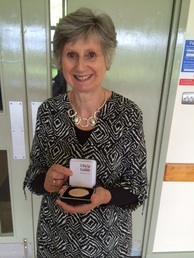 Janet has recently received two awards. The medal is the City and Guilds Medal of Excellence which is an annual award. She was awarded it in the Tutoring Category for her work at Missenden Abbey since 1991. The other award she won was the 2016 Broderer's Prize which was presented by Princess Anne at Buckingham Abbey. No medal this time as the prize is a cheque. Thank you Vernice. Ros Jane O’Brien started her working life as an interior designer after studying the History of Art. She became interested in damask, a fabric which she explained originated from the city of Damascus at the end of the Silk Route. It is distinctive as it is reversible with a matt and shiny weave. Classical plants and birds were the most common patterns but Jane explained that in the past people chose battle victories or events in their life as a design source to create their own bespoke wall coverings or table linen. Instead of showing samples of old materials, Jane’s presentation told the story of damask through a series of paintings, many of which we recognised but had not studied with regard to the fabric. She pointed out the pomegranate fruit and the reversed images of birds on many of the designs which went as far back as 1370. A number of these paintings can be seen in the National Gallery. Jane also mentioned Waddeston Manor as being an interesting house to visit for examples of damask wall papers and furnishings. Jane went on to explain how she had incorporated damask into her work using images of old masters, text and damask in collage. Bringing the fabric up to date she had worked on an apron, a duster and even tea bags. Jane concluded by talking about the Italian company, Rubelli and explained how damask is still widely used for wall coverings and upholstery.
A group of 15 members were led by Helen on her last ever workshop, and we all enjoyed learning how to use plastic-covered rope wound with a variety of textiles and machine-sewn with a small-ish zig-zag stitch to make a small shaped bowl. The effort and concentration involved were mighty, but we all managed to achieve pleasing results. The great variety of results was a testament to the use of the variety of materials we used – from sari tops to striped or flowery light-weight cottons and silks - and whether we had turned over the edge of our strips, or left it raw. Twisting the material to cover the rope and then holding it with a small clip, was rather time-consuming but Helen assured us that we can do this while watching TV with practice. Holding the rope straight while machining was quite absorbing, and we learned that altering the tension allowed us to produce pleasing curves and in-out gradations in our vessels. We were encouraged to pre-dye material or to dye pots after completion using her dye in a plastic bag method. We also learned an easy way to turn down edges of strips using an iron and a strategically placed pin which delighted everyone. Helen was a delightful, fascinating and encouraging guide, and we wish her well in her determination to devote herself to further inventions in her own studio. Report and photos by Clare R
Thank you, Clare! Ros |
AuthorInformation in this blog is provided by branch members who have attended the meeting, workshop or event. Categories
All
Archives
November 2016
|

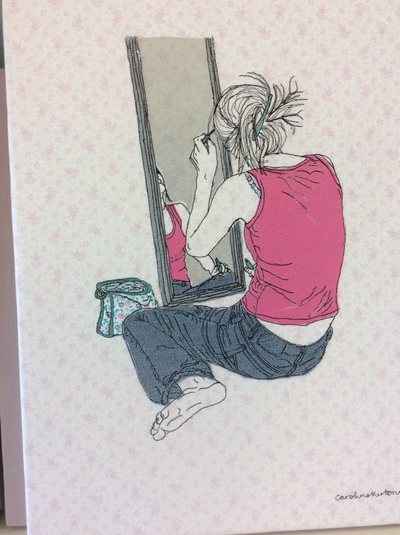
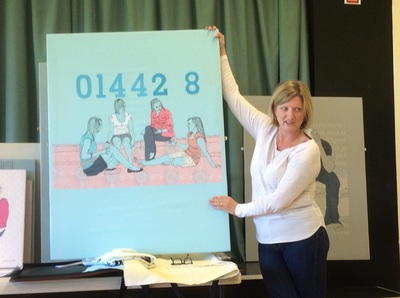
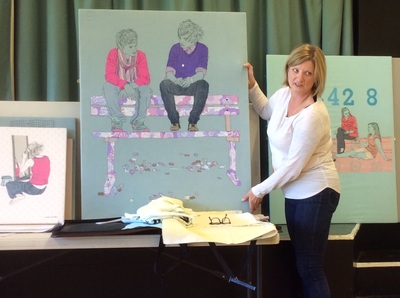

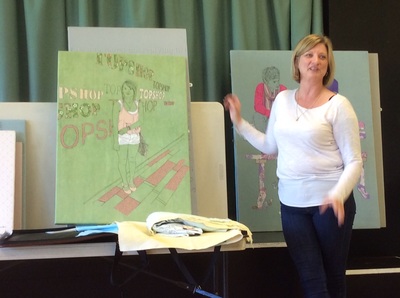
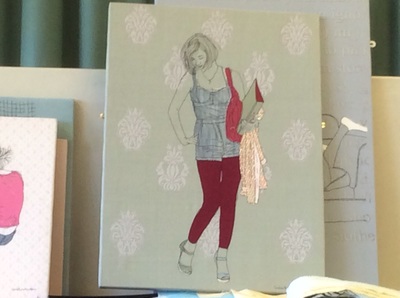
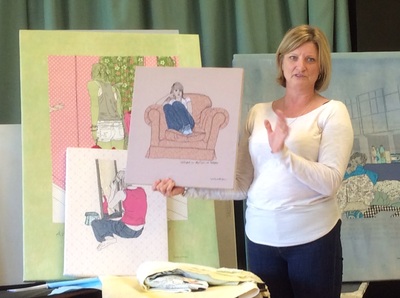
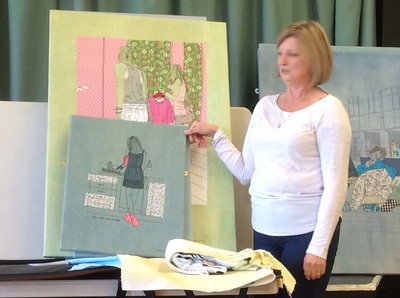
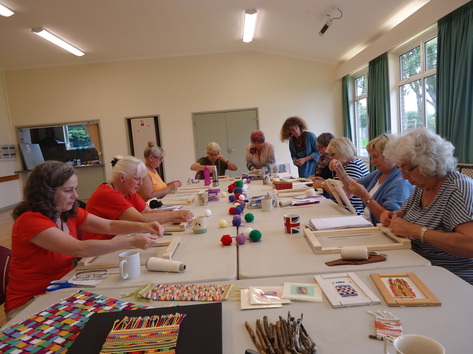
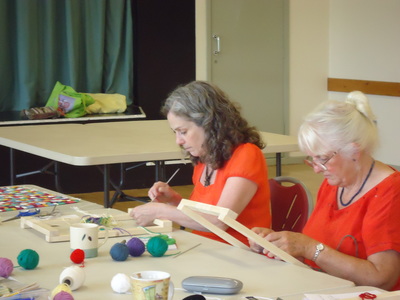
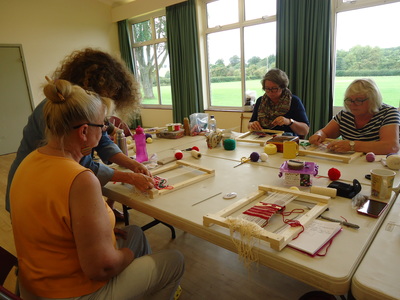
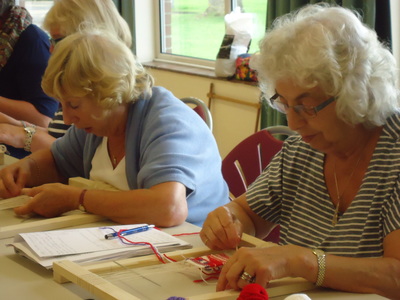
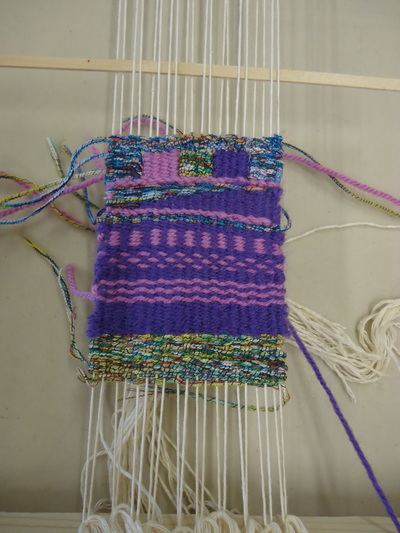
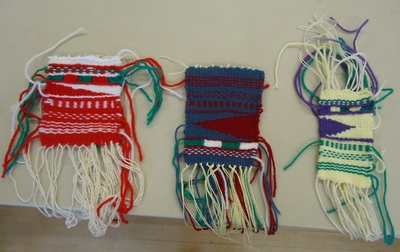
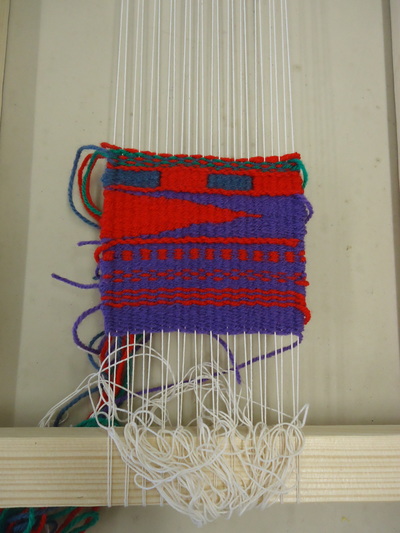
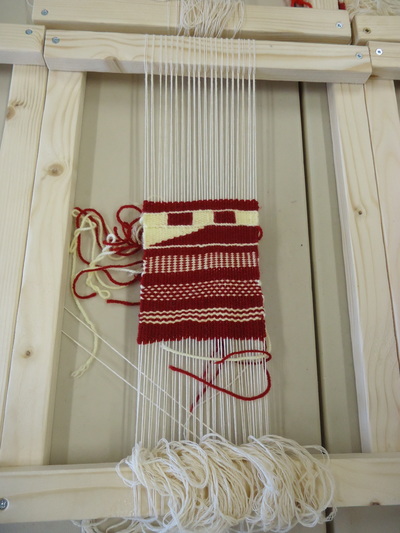

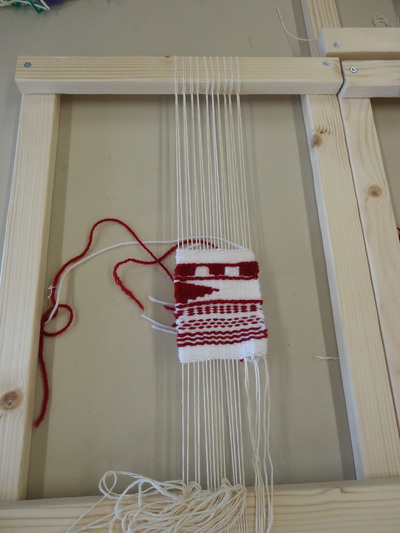
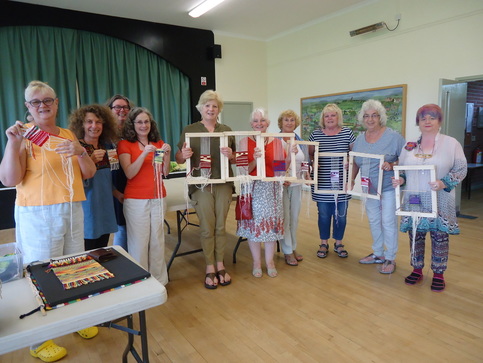
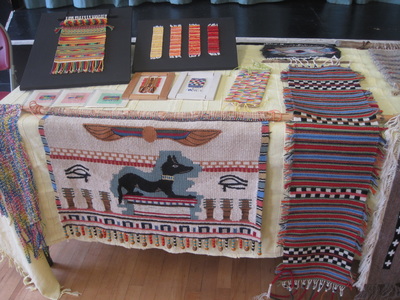




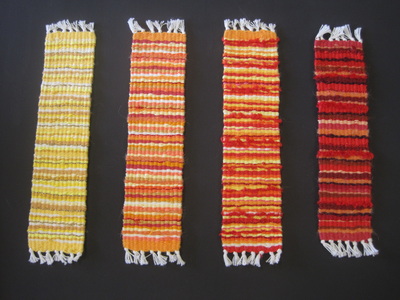

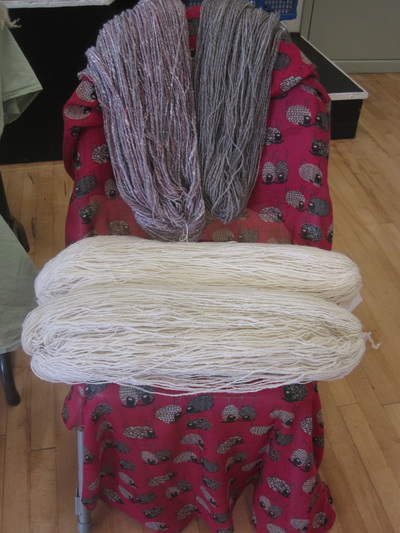
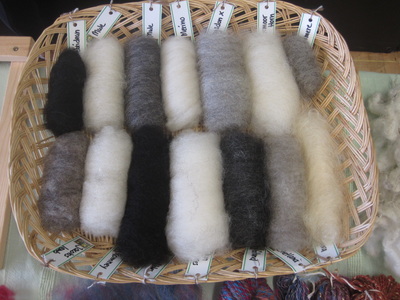
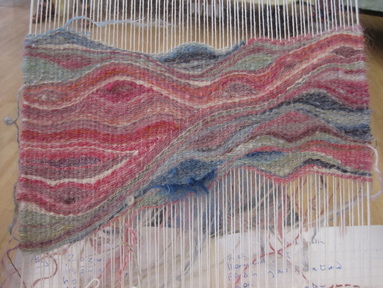
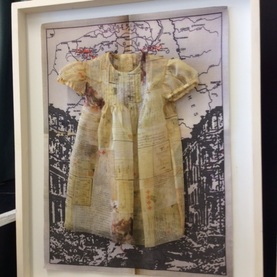
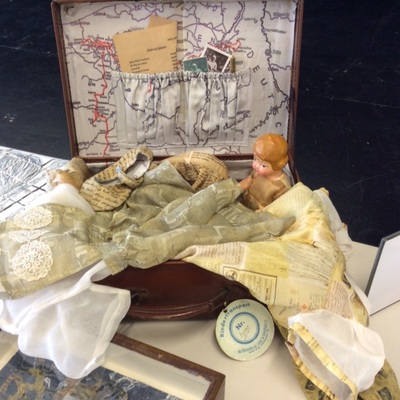
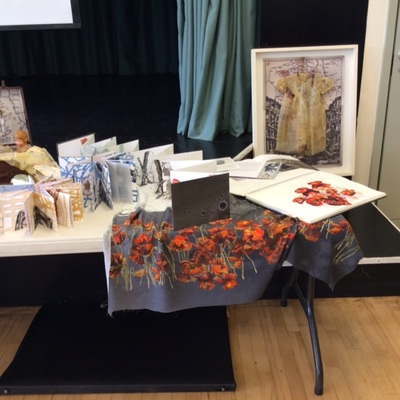
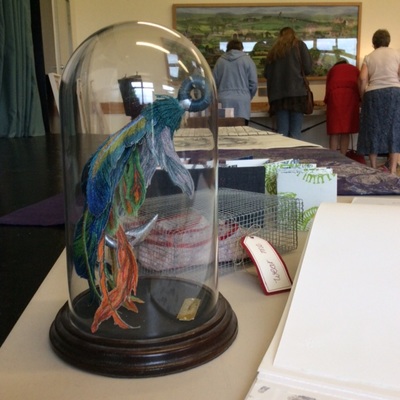
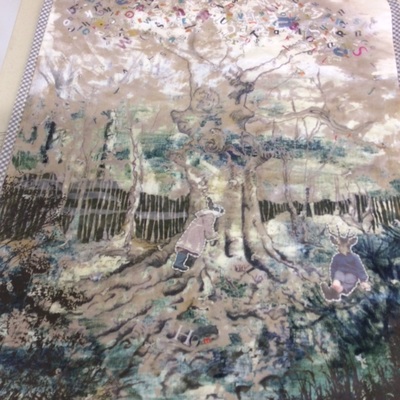
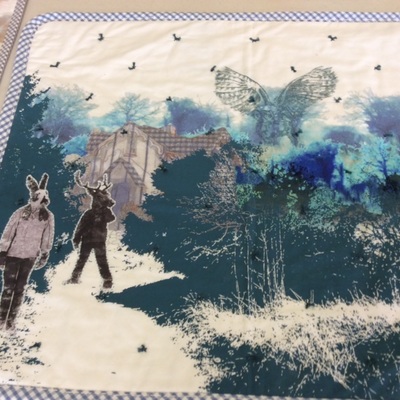
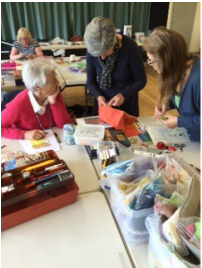

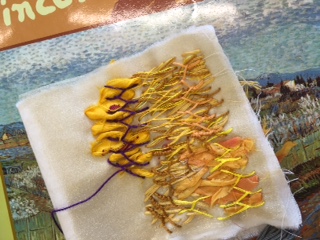
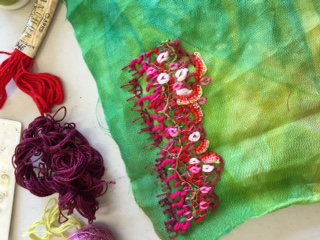



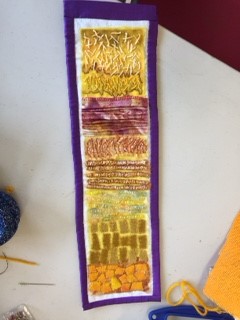
 RSS Feed
RSS Feed
